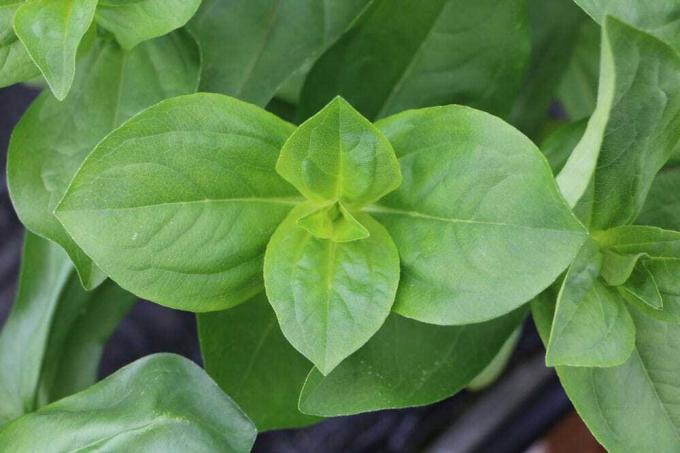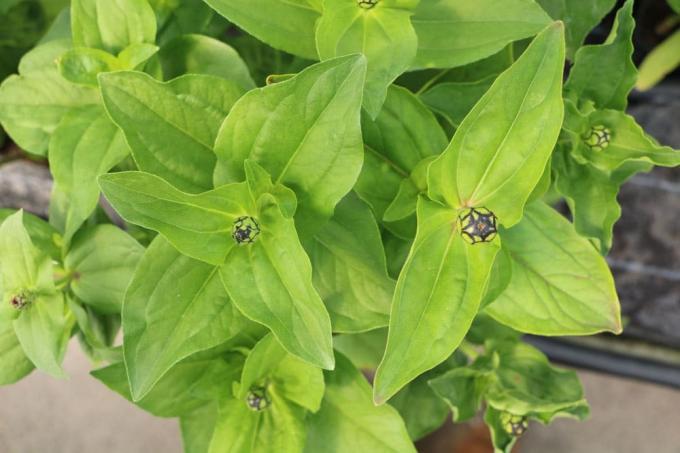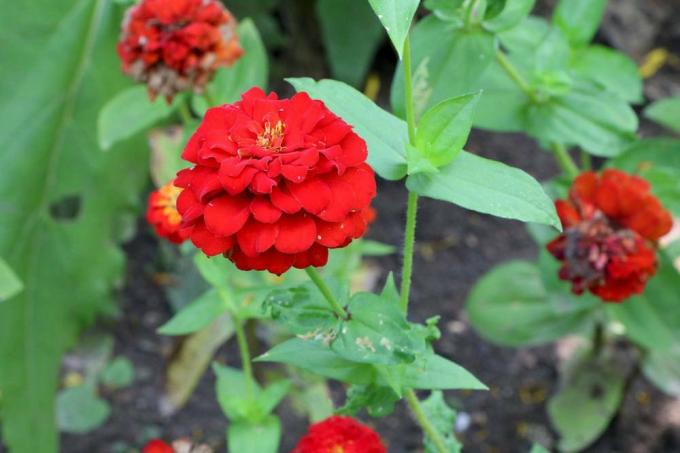
table of contents
- Prefer in the house
- Direct sowing in the bed
- Direct sowing in the bucket
- Prick out zinnias
- Pay attention to the correct location
- frequently asked Questions
Once upon a time they could not be missing in any cottage garden; the zinnias. Today they are celebrating their comeback and impress with a long flowering period from May to October and a great variety of colors.
In a nutshell
- Zinnias (Zinnia) are annual summer flowers from the sunflower family
- They grow upright, unbranched to branched and herbaceous
- There are tall and dwarf varieties with simple or double flowers
- Sowing is possible in preculture or direct sowing in beds and buckets
- Prick out too dense seeds and only plant out after the frost
Corresponding seeds are available from specialist gardeners, where they often offer seed bags with colorful mixtures. If you already have one or the other specimen, you can harvest seeds from them in due course. In general, you should use the manufacturer's recommendations for sowing dates. For cultivation you need small, 9 cm flower pots, nutrient-poor sowing soil, a watering can with spray attachment and of course the seeds. So-called multi-pot plates from specialist gardeners are particularly suitable for sowing.

- Sow in preculture, usually from February / March
- First fill the pots with seed compost up to the edge of the container
- Tap it several times so that the earth settles
- Or press the earth lightly with your hands
- Sow three to five seeds per pot on the substrate
- Do not lay seeds too close together
- Moisten the substrate, ideally with a spray bottle
- Then let some earth trickle over the seeds
- Seed depth according to the information on the seed bag
- Moisten the substrate again and from now on keep it evenly moist
- Cover pots with cling film or glass
- Then put it in a warm and bright, not sunny place
- Remove cover daily for ventilation
- Optimal temperatures for germination constant at around 18 degrees
- Germination time is about 14 days
Direct sowing in the bed
Zinnias can also be sown directly in the bed, but then not before the ice saints, i.e. at the earliest from mid / late May to June. Under no circumstances should the seeds sprout as long as night or ground frosts are expected, as they are extremely sensitive to cold.

- It is best to sow directly on the spot
- Pricking and transplanting are usually not necessary
- First prepare the bed for the seeds
- Earth should be fine crumbly
- Add plenty of compost
- Smaller varieties at intervals of approx. Sow 20 centimeters
- Recommended for larger distances of 30-40 cm
- For the formation of long flower stalks, it is advisable to sow more densely
- When planting in rows, sow at intervals of 30 cm
- Press the seeds about three centimeters into the soil
- Pour the whole thing without washing away the earth
- Connect higher growing varieties as a precaution
Tip: These pretty summer flowers usually also self-sow. However, because of their sensitivity to frost, germination in our latitudes is anything but reliable.
Direct sowing in the bucket
Of course, these colorful flowers can also be sown directly in tubs. The best time is also here between May and June. The pot or bucket in question should be equipped with drainage holes and good drainage so that excess irrigation water can run off at any time. Normal, commercially available potting soil is suitable as a substrate. Sow the seeds as described above, water them and place the bucket in a place protected from heavy rain.
Tip: While zinnias usually get along without fertilizer in beds, specimens in planters have to be fertilized weekly.

Prick out zinnias
The sowing is followed by pricking, depending on how densely or how many seeds were sown per pot. As soon as the plants have reached a height of about ten centimeters, it is time to isolate them.
- Zinnia roots are very sensitive
- Therefore proceed very carefully when pricking out
- First fill plastic pots with substrate
- Then pour a fine stream from the watering can
- Now select the strongest plants
- Carefully lift out of the pot with a prick stick
- Then use the pricking wood to create the planting holes
- Place plants individually and deep into the planting holes
- So they get hold and form side roots
- Lightly press the earth with your hands
- Place in a bright place without direct sunlight
After pricking, the young plants are cultivated in the pot until spring. During this time, the substrate should always be kept evenly moist but not wet. Water in saucers or planters should be removed regularly. From the middle / end of May you can finally plant them in the garden, in their final place.
Tip: You shouldn't wait too long before pricking, because the younger the plants are, the faster and more reliably they will grow. But they should have three to four fully developed leaves.

Pay attention to the correct location
When the time has come to plant out, you should pay attention to a suitable location. The zinnia (zinnia) is a true sun worshiper who doesn't mind the blazing midday sun. In its natural habitat, it thrives in stony steppe areas and semi-deserts. As a result, sunny and warm, rather dry and sheltered places in the garden are ideal.
The subsoil can be slightly loamy or sandy-loamy. In general, the zinnia needs a well-drained, rather poor and humus-poor subsoil. A moderately dry moisture content of the soil is of the greatest relevance. Moisture would severely affect the plants and cause them to perish. For the use of normal potting soil, for example if it is kept permanently in a bucket, this means that it should be made more permeable with sand, perlite, lava granulate or fine gravel.
frequently asked Questions
When planting out, attention should be paid to a sheltered but well-ventilated place. If the plants are too dense, they cannot be adequately ventilated. This makes them more prone to fungal diseases like powdery mildew.
Snails in particular, particularly nudibranchs, can become a big problem for zinnias. These attractive summer flowers are high on your menu. Aphids and spider mites can occur somewhat less frequently.
Even if they are not hardy in this part of the world, there is the possibility of hibernating specially potted plants in a bright and cool place protected from frost. To do this, they should be brought into the house before the first frost, watered only a little and not fertilized. This effort is usually not worthwhile for specimens in the bed.
The zinnia is one of the slightly poisonous plants. They contain alkaloids and other substances that can cause allergies if they come into contact with the skin. To avoid this, sensitive people should wear gloves when handling this plant.
